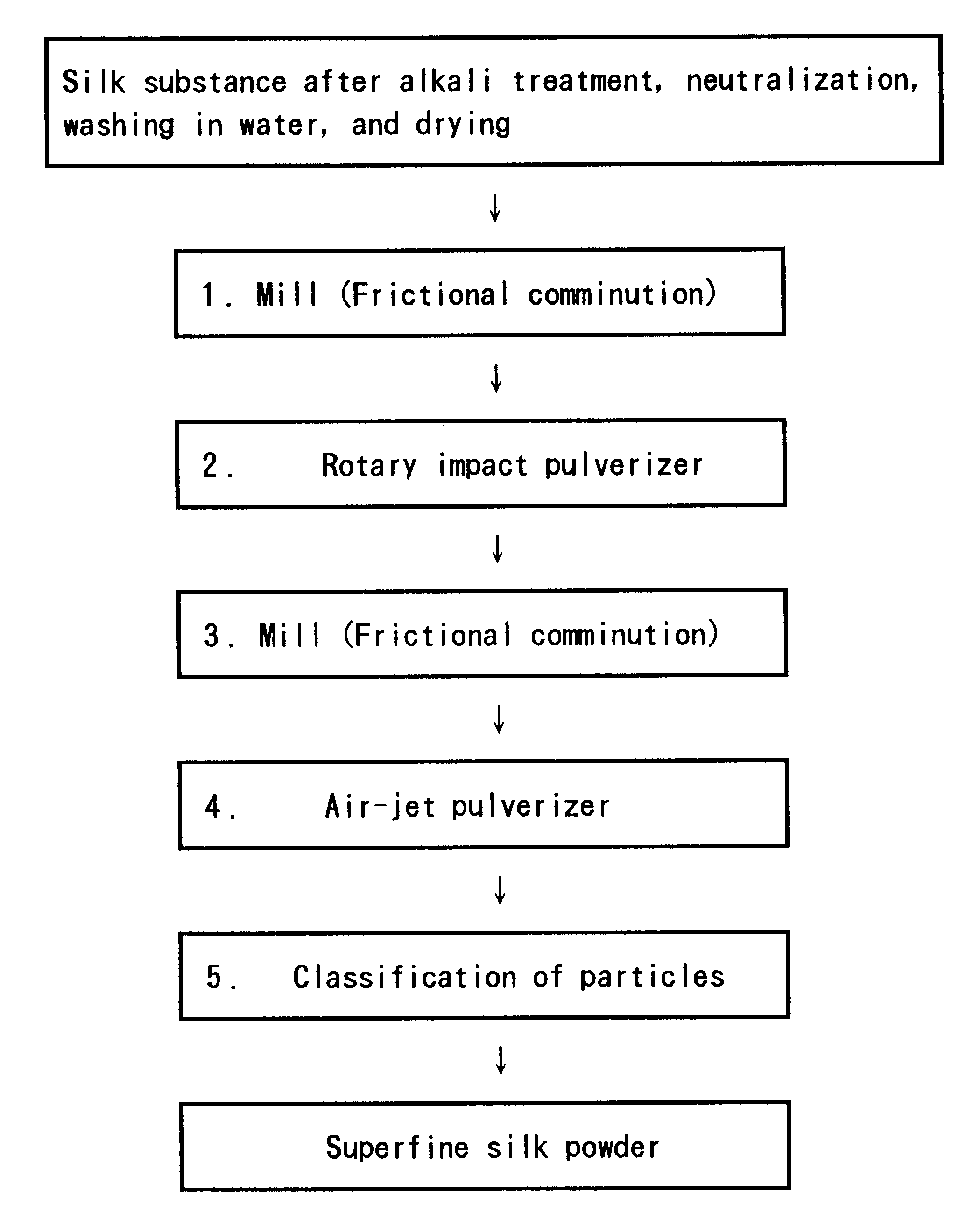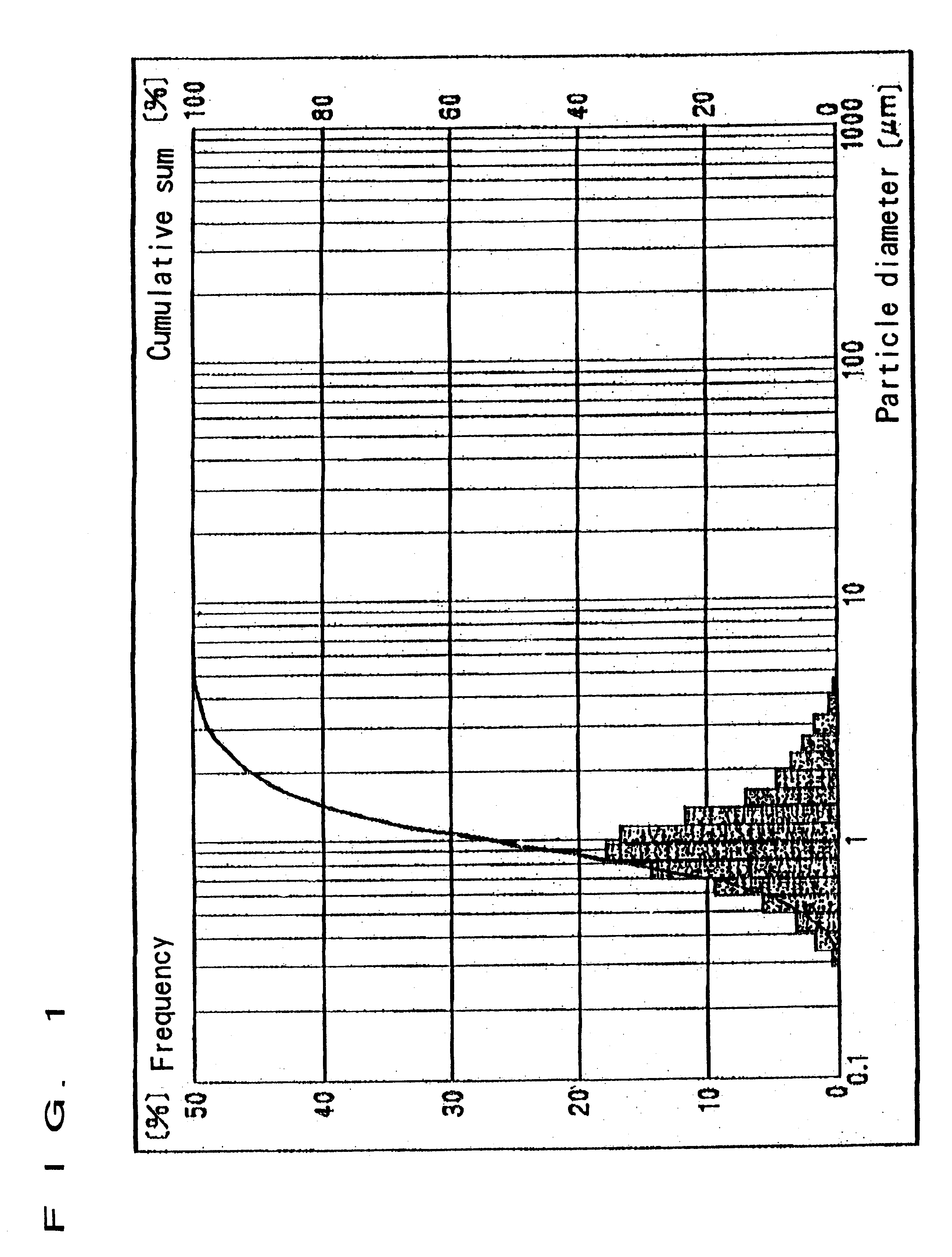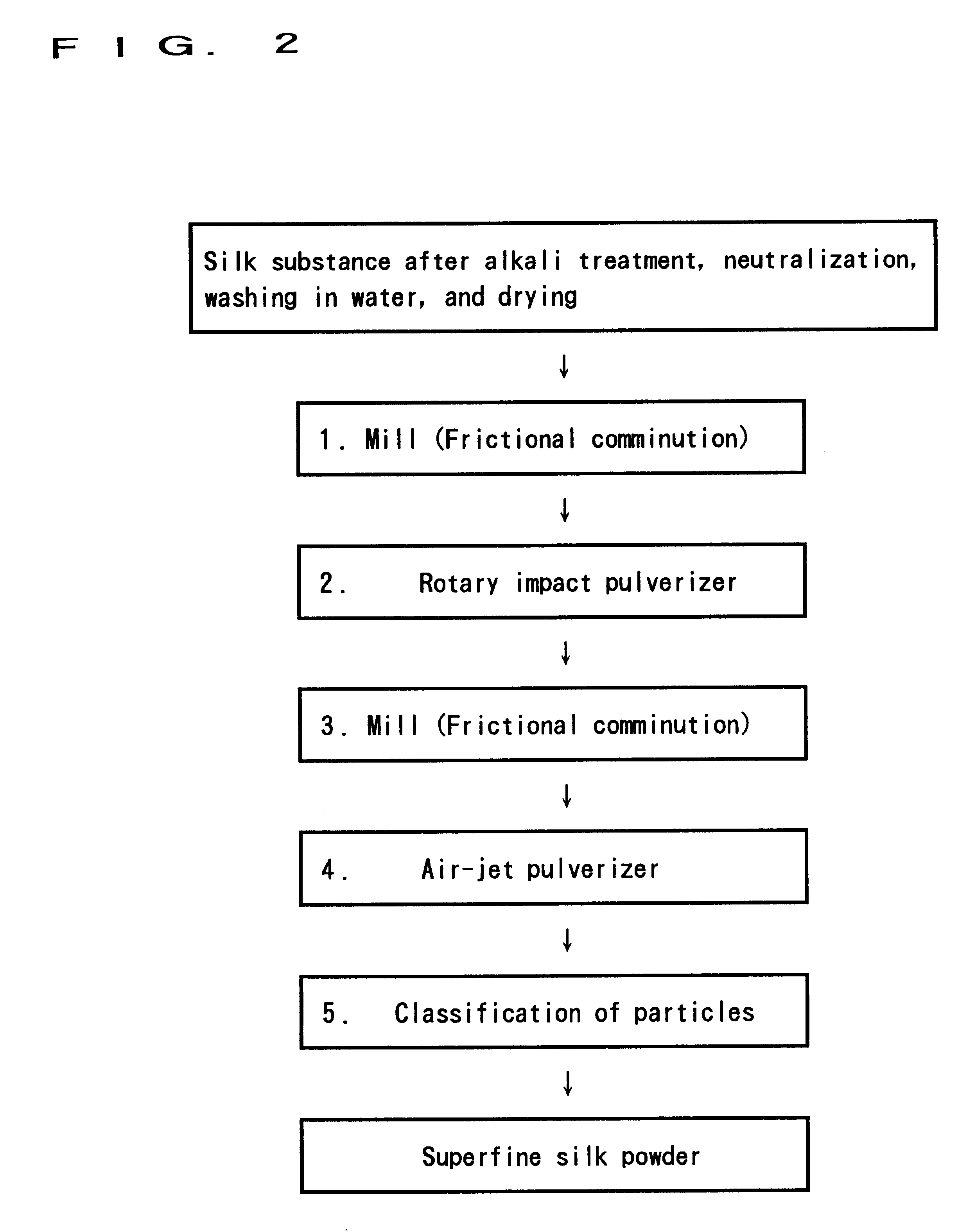Method for manufacturing crystalline superfine silk powder
a technology of superfine silk and powder, which is applied in the field of manufacturing crystalline superfine silk powder, can solve the problems of not being able to achieve the effect of producing crystalline silk fibroin, reducing the amount of acid required naturally, and achieving the effect of inexpensive and efficient production
- Summary
- Abstract
- Description
- Claims
- Application Information
AI Technical Summary
Benefits of technology
Problems solved by technology
Method used
Image
Examples
example 2
As a material substance, bourette (by-silk-yarn a few centimeters or less in the fiber length of silk yarn, Bombyx mori) was used which comes out in a silk spinning process and the bourette having the composition shown in Table 3 was put into a glass bottle to be treated for two hours at a temperature of 125.degree. C. (under a pressure of 2.37 atmospheres) with the bottle tightly sealed.
The treated silk substance was neutralized, washed in water, and dried, and thereafter comminuted.
The substance was neutralized with hydrochloric acid to have a pH of 7.+-.1, and then dehydrated and washed in water repeatedly four times, and finally dried at a temperature of 40.degree. C.
The comminuting treatment was carried out by means of the same agitating crusher used in Example 1.
That is, in the comminuting, the agitating crusher (a type by Ishikawa) was used for frictional comminution; then the rotary impact pulverizer (Sample Mill KI.multidot.-1 made by Fuji Denki Kogyo) was used for powderin...
example 3
Raw silk of silkworms, Bombyx mori, was boiled for one hour for degumming in a 0.1% sodium carbonate aqueous solution 50 times greater in quantity than the raw silk to form fibroin fabrics (silk yarn).
This silk yarn was used as a material substance to perform alkali treatment under conditions shown in Table 4.
For the comminuting process after the alkali treatment, case (1), case (2), and case (3) of Table 4 were carried out like in the processes shown in FIG. 2 excluding the classifying process; case (4) of Table 4 was carried out as in the process shown in FIG. 3; and case (5) of Table 4 as in the process shown in FIG. 4.
FIG. 3 and FIG. 4 show flow diagrams of the comminuting process.
Table 4 shows the average particle diameter of the resultant powder and the ratio of collection of powder.
In addition, classification of the resultant powder obtained in case (3) of Table 4 provided powder 1.2 .mu.m and 2.5 .mu.m in an average particle diameter.
example 4
Table 5 shows the relationship between the average particle diameter of the silk powder particles and the adhesion property thereof, concerning the silk powder of silkworms, Bombyx mori, which was obtained by the methods of Examples 2 and 3, and in the intermittent processes thereof.
An amount of around 10 g of silk powder with different average particle diameters is placed on a sheet of paper and is spread to about 50 cm.sup.2. Then, a test piece is placed on the powder to be adhered thereto and further, the test piece was covered with an amount of 10 g of the powder of the same average particle diameters.
Subsequently, the test piece buried in the powder was lifted vertically with tweezers. Then, the test piece was weighed with powder adhered thereto to calculate the amount of powder adhered to the surface and the reverse of the test piece per unit area.
The measurement was carried out in a room at a temperature of 20.degree. C. with 65% HR.
The test piece had the shape of a film with...
PUM
| Property | Measurement | Unit |
|---|---|---|
| average particle diameter | aaaaa | aaaaa |
| temperature | aaaaa | aaaaa |
| temperature | aaaaa | aaaaa |
Abstract
Description
Claims
Application Information
 Login to View More
Login to View More - R&D
- Intellectual Property
- Life Sciences
- Materials
- Tech Scout
- Unparalleled Data Quality
- Higher Quality Content
- 60% Fewer Hallucinations
Browse by: Latest US Patents, China's latest patents, Technical Efficacy Thesaurus, Application Domain, Technology Topic, Popular Technical Reports.
© 2025 PatSnap. All rights reserved.Legal|Privacy policy|Modern Slavery Act Transparency Statement|Sitemap|About US| Contact US: help@patsnap.com



